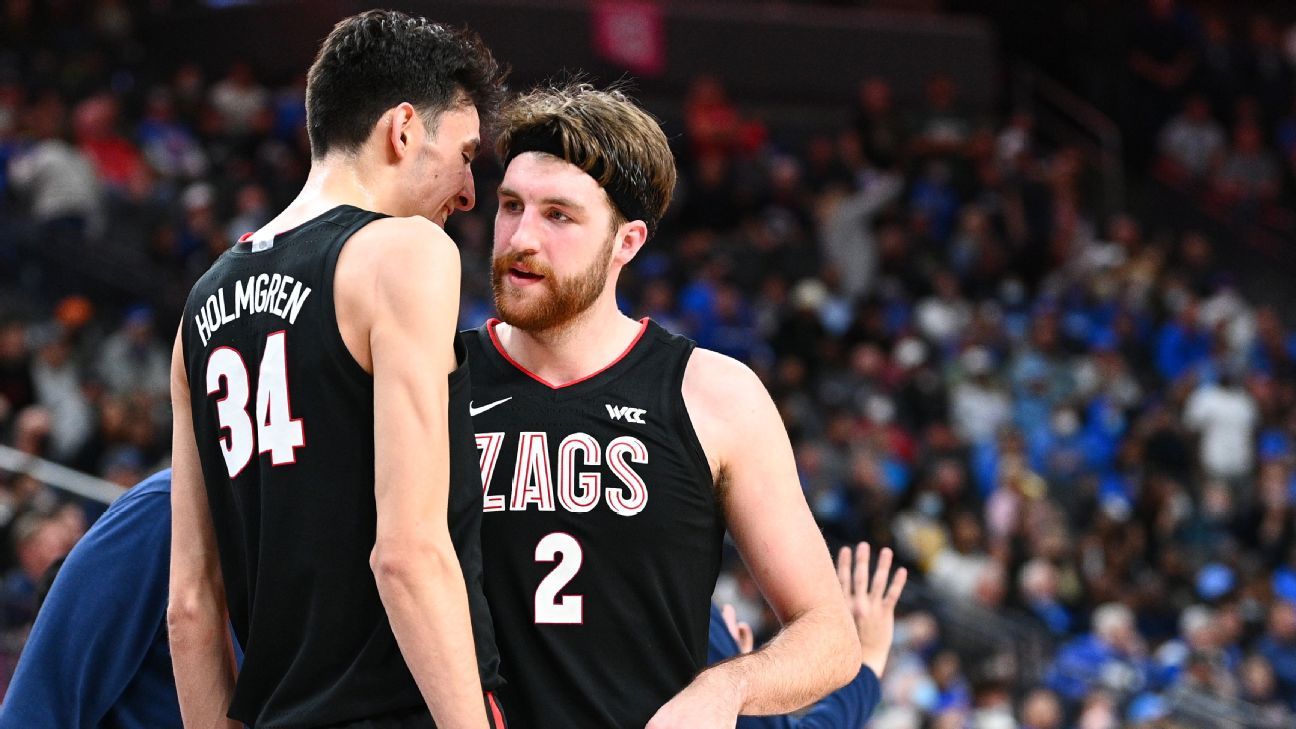NCAA MBB Tournament Selection thread
- Thread starter Tom McAndrew
- Start date
You are using an out of date browser. It may not display this or other websites correctly.
You should upgrade or use an alternative browser.
You should upgrade or use an alternative browser.
With Rutgers in a play in game, reasonable to assume they wouldn’t be dancing had PSU upset them last Sunday, which they came ever so close to doing.

March Madness 2022: Everything you need to know about all 68 men's teams
From Gonzaga to Wright State, here's your look at every team appearing in the 2022 men's NCAA tournament field.
It would have changed things, since then they aren’t the #4 seed in Indy and have a different path.With Rutgers in a play in game, reasonable to assume they wouldn’t be dancing had PSU upset them last Sunday, which they came ever so close to doing.
Wisconsin has a good path.I like Nova’s bracket…..they just might surprise some folks this tournament.
One thing I don't understand about the play-in games ... always thought those were for the #16 seed in each regional. But now I see them playing for a #11 seed, #12 seed, etc. If 2 teams aren't good enough to make the 64 team bracket, how is it possible for them to be playing-in for a #11 seed?
This started three or four years ago.One thing I don't understand about the play-in games ... always thought those were for the #16 seed in each regional. But now I see them playing for a #11 seed, #12 seed, etc. If 2 teams aren't good enough to make the 64 team bracket, how is it possible for them to be playing-in for a #11 seed?
Yes, and doesn't really make sense. Theoretically the four 16 seeds are the lowest ranked teams in the 64 team bracket. So if the NCAA is increasing it to 68 teams, then the 8 lowest ranked teams should be playing-in for the #16 seeds. I just don't understand the reasoning here.This started three or four years ago.
Looking at the host cities, I think the NCAA needs to get a map.
It was all part of the compromise to expand the tournament...it was 64 with 30 auto bids and 34 at-large selections. A 31st conference was formed, and the "big boys" didn't want the auto-bids cut down, so they moved from 64 to 65, keeping the 34 at-large selections and having 64 play 65 for the right to be a 16 seed. Then a 32nd conference was added, they expanded again, and all agreed to move from 65 to 68, with 32 auto bids, and 36 at-large. As part of the expansion, the smaller conferences didn't want to all lose their spots, so an agreement was reached that teams 65 thru 68 would play each other for 2 of those 16 seeds, and the last 4 at-large teams would play either other for the other two extra spots, slotting into whatever position they would fall in the bracket.Yes, and doesn't really make sense. Theoretically the four 16 seeds are the lowest ranked teams in the 64 team bracket. So if the NCAA is increasing it to 68 teams, then the 8 lowest ranked teams should be playing-in for the #16 seeds. I just don't understand the reasoning here.
The regions apply to the locations of the Regional Semifinal/Regional Final...for the first round games, top seeds are kept as close to home as possible as a reward. Moving to this "pod" system allowed them a lot more flexibility in filling out the bracket.Looking at the host cities, I think the NCAA needs to get a map.
Not only dancing, but as an 11 seed, they weren't even on the bubble.After going back and reviewing Michigan’s schedule this season, I am a bit shocked they’re dancing.
I would have easily had them in…they played an extremely tough non-conference schedule, 7 wins over other tournament teams, only two questionable losses (and no shame in the loss at UCF), metrics like them. Pretty much everyone that looks at this seriously had them in.Not only dancing, but as an 11 seed, they weren't even on the bubble.
Worried about their lack of size and Samuels shooting. Think they have good chance to beat OSU.I like Nova’s bracket…..they just might surprise some folks this tournament.
I wouldn’t give Ohio State much of a chance to beat Villanova.Worried about their lack of size and Samuels shooting. Think they have good chance to beat OSU.
And increased the likelihood of full stands, which I believe was the criteria used.The regions apply to the locations of the Regional Semifinal/Regional Final...for the first round games, top seeds are kept as close to home as possible as a reward. Moving to this "pod" system allowed them a lot more flexibility in filling out the bracket.
Sure. It’s business. The Connecticut women will once again be playing in Storrs; they have home court advantage just about every year. Tennessee used to have that same advantage back in the day, themselves.And increased the likelihood of full stands, which I believe was the criteria used.
Last edited:
I heard on Sirius College Sports radio that Jameer Nelson (guard from St. Joe’s Elite Eight run) has a son playing for Delaware that just made the tournament. Hearing this really hit me in the gut! I looked up Jameer’s birthdate and I was a sophomore in high school in 82. While I wasn’t hooking up at that age, it makes me old enough to have a grandson in the NCAA tournament.